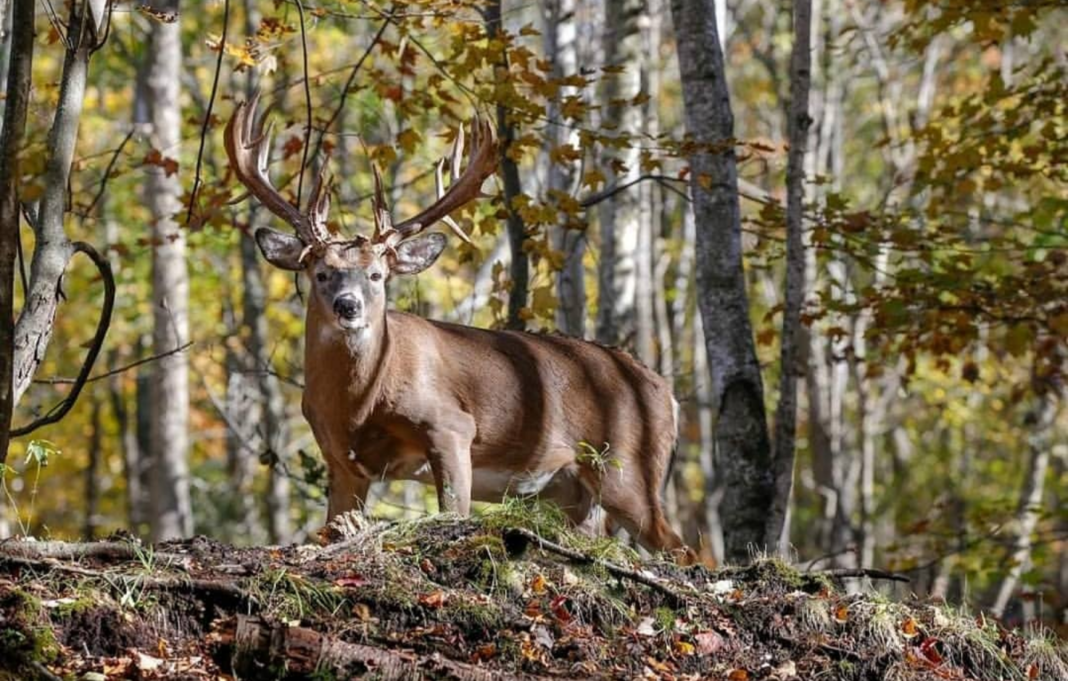https://www.facebook.com/thehuntingpage/videos/636250193522448/?t=0
There are many ways to enhance your whitetail hunting area that range from food plots, to quality deer management programs, to timber stand improvement. Here are five tips that will improve your deer hunting opportunities.
Create A Selective Logging Mess
Logging can benefit you and your property in many ways. Timber is renewable, and like any other crop, it will flourish and increase in value over time if managed properly. Poor management can compromise the overall value of your timber stand. The advantages to logging your timber include:
- Substantially increase browse production
- Increase tonnage of food produce
- More than double the growth of the remaining timber left to be managed
- Increase fawning cover
- Creates optimal security and thermal cover
Create A Sanctuary
Whitetail deer are masters at concealment. They use rolling hills, tall grass, ditches, logged out areas, swamps, and thickets to hide their outline. It does not take a lot of brush to hide the biggest buck in the county. Whitetails mask their presence by disappearing into cover, just about any cover, and they simply melt into the landscape. Providing an off-limits piece of your property that is built to sustain deer bedding and feeding for at least 5 years is the key to having a “whitetail sanctuary”. Rarely do you enter these areas unless shed hunting or tracking a deer.

Create Perfect Access To and From Stand Sites
With whitetail hunting, the perfect tree for a stand and hottest hunting areas doesn’t always match up. Sometimes you simply can’t access these hot spots without bumping deer in the process. However, the tree stand location can always be changed, and your travel to and from that stand can be mapped out as to not spook as many deer entering or exiting your setups. Face it: you will always bump some sort of deer movement when navigating to and from your sets, but minimizing the number of deer being boggered will increase sightings and shot opportunities around those stands.
Offer a Variety of Food Sources
We all know that whitetails gravitate toward agriculture food sources and all the food plots that we plant for them, but that’s not all they eat. They love the corn, soybeans, wheat, and clover that’s planted, but they cannot and do not rely on those planted crops alone. There are several hundred plant species that deer can eat that are naturally growing in the woods. Being able to identify these browse plants would be a great benefit to a whitetail hunter. Knowing where to find them, when they’re most attractive to deer, and how to enhance these favorite deer plants would be a boost to your success in the woods tremendously.
Limiting Intrusion
Providing quality food sources alone is not enough! Whitetails have to feel safe and confident enough to feed in your food sources during shooting hours. Toward the late season, local whitetails have likely seen it all. Hunter access, sloppy trail camera checks, and deer harvest recoveries in and around bedding and sanctuaries that took place throughout the season have all influenced the deer behavior and willingness to feed or travel during daylight hours. Whitetails do not know the difference between a small game hunter person walking their dogs or kids playing in the woods; to them, it is all intrusion.



















![The Best Deer Camp Chili [VIDEO] Deer Chili Ingredients, Tomatoes, Chili Spices](/wp-content/uploads/2015/10/Deer-Chili-Deer-Camp-Recipe-218x150.jpg)
![How to Call Elk Early in the Season [VIDEO]](/wp-content/uploads/2016/08/byers003-218x150.jpg)




![Idiots Disturb Hunter: How Would You Have Handled It? [VIDEO]](/wp-content/uploads/2015/10/DSC00110-e1474487693878-100x70.jpg)
![Albino Buck Shocked to Shed His Antlers [VIDEO]](/wp-content/uploads/2015/10/AlbinoDeer-100x70.jpg)